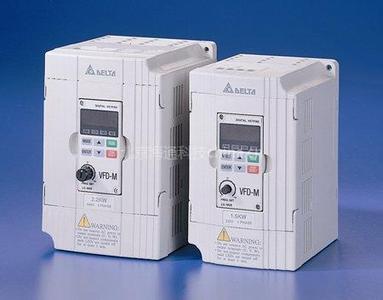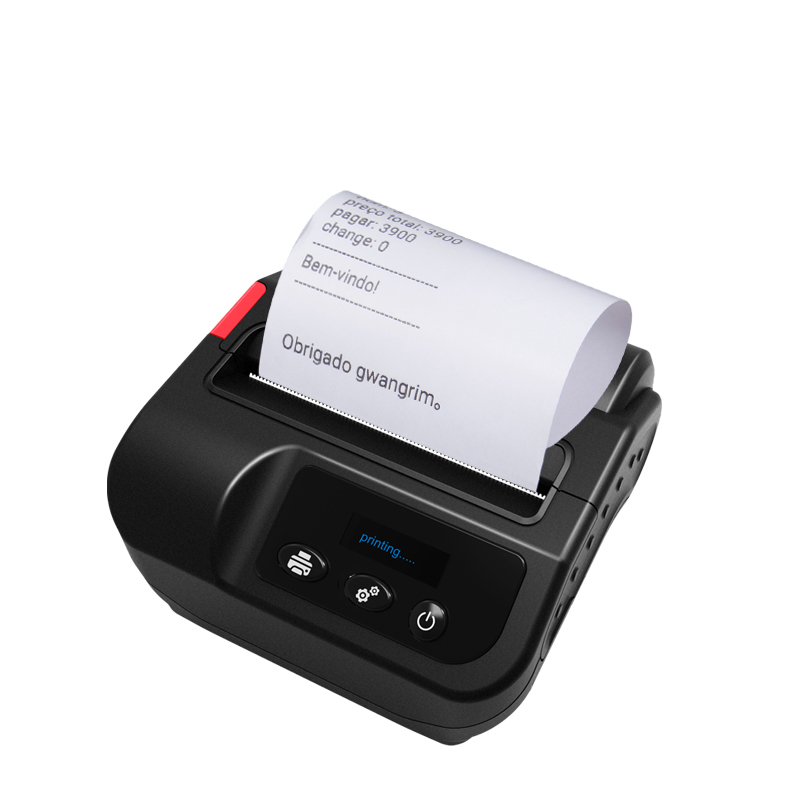 I. Main fault causes and preventive measures of the inverter Due to incorrect use methods or unreasonable installation environment, the inverter will easily cause malfunction and failure of the inverter, or it will not be able to meet the expected operating results. To prevent problems, prior to failure It is particularly important to analyze the cause carefully.
I. Main fault causes and preventive measures of the inverter Due to incorrect use methods or unreasonable installation environment, the inverter will easily cause malfunction and failure of the inverter, or it will not be able to meet the expected operating results. To prevent problems, prior to failure It is particularly important to analyze the cause carefully. 1. External electromagnetic induction interference If there are interference sources around the inverter, they will invade the inverter through radiation or power lines, causing the control circuit to malfunction and causing abnormal operation or shutdown. In severe cases, the inverter may even be damaged. It is important to improve the inverter's own anti-jamming capability. However, due to device cost constraints, external noise suppression measures are adopted. It is more reasonable and necessary to eliminate interference sources. The following measures are specific ways to implement the "three noes" principle for noise interference.
(1) Absorbing devices for preventing surge voltage, such as RC absorbers, shall be installed on the control coils of all relays and contactors around the inverter.
(2) Minimize the wiring distance of the control circuit and separate it from the main line.
(3) The designation of a circuit using shielded wires must be carried out according to regulations. If the line is long, reasonable relaying methods should be used.
(4) The ground terminal of the inverter shall be in accordance with the regulations, and shall not be mixed with electric welding and power grounding.
(5) Install a noise filter at the input end of the inverter to avoid interference from the incoming line of the power supply.
The above is the "three noes" principle that does not output interference, does not transmit interference, and does not accept interference.
2. Installation Environment The inverter is an electronic device. It has the requirements for detailed installation and use of the environment in its specifications. In special circumstances, if these requirements cannot be met, appropriate restraint measures must be used as far as possible.
(1) Vibration is the main cause of mechanical damage to electronic devices. For vibration shock applications, rubber and other anti-vibration measures should be used.
(2) Moisture, corrosive gas, dust, etc. will cause electronic devices to rust, poor contact, and reduced insulation to form a short circuit. As a precautionary measure, the control board shall be treated with antisepsis and dustproof treatment, and the enclosed quantity shall adopt a closed structure.
(3) Temperature is an important factor affecting the life and reliability of electronic devices. In particular, in semiconductor devices, if the junction temperature exceeds the specified value, the device will be immediately damaged. Therefore, the air conditioner or the direct sunlight should be installed according to the environmental conditions required by the device.
In addition to the above three points, it is also necessary to regularly check the air filter and cooling fan of the inverter.
For special cold occasions, to prevent the microprocessor from operating normally due to low temperatures, necessary measures such as setting up space heaters should be taken.
3. Abnormality of the power supply The power supply is abnormally manifested in various forms. However, it can be classified into the following three types, ie, phase loss, low voltage, and power failure. Sometimes they come in mixed forms. Most of the causes of these anomalies are caused by wind, snow, and lightning strikes on the power transmission line, and sometimes due to ground short circuits and phase-to-phase short circuits in the same power supply system. The lightning strikes vary greatly by region and season. In addition to voltage fluctuations, some grids or self-generating units also exhibit frequency fluctuations, and these phenomena sometimes occur repeatedly in a short period of time. In order to ensure the normal operation of the equipment, corresponding requirements are also put forward for the power supply of the inverter.
(1) If there are equipment such as direct starting motors and induction cookers nearby, in order to prevent the voltage drop caused by the input of these equipments, it is hard for the inverter power supply system to separate and reduce the mutual influence.
(2) For the occasions that require continuous operation after a momentary power failure, in addition to selecting an appropriate inverter, the speed reduction ratio of the load motor is also considered in advance. The frequency converter and the external control loop adopt the instantaneous stop compensation method. After the voltage is restored, the overcurrent in acceleration is prevented by the speed tracking and the detection of the speed measuring motor.
(3) For equipment that requires a certain amount of operation, an inverter shall be installed to automatically switch the uninterruptible power supply.
Although diode input and inverters using single-phase control power supply can continue to operate even in the phase-losing state, the currents of individual devices in the rectifier are too large and the pulse current of the capacitor is too large. If the long-term operation will affect the life and reliability of the inverter. The adverse effects should be checked and dealt with as soon as possible.
4. Impulse voltage caused by lightning, induced lightning, or induced lightning may sometimes cause damage to the inverter. In addition, when the power system has a vacuum circuit breaker on the primary side, the short circuit can also generate a high surge voltage when it is opened or closed. as shown in picture 2.
When the vacuum circuit breaker on the primary side of the transformer is disconnected, high voltage surge spikes are formed on the secondary side through coupling.
(1) In order to prevent overvoltage damage caused by surge voltage, it is usually necessary to add a varistor and other absorption devices at the input of the inverter to ensure that the input voltage is not higher than the maximum voltage allowed during the main circuit of the inverter. As shown in Figure 3.
(2) When vacuum circuit breakers are used, additional RC surge absorbers are formed by the impact using the impact.
(3) If there is a vacuum circuit breaker on the primary side of the transformer, the inverter shall be disconnected before the action of the vacuum circuit breaker in the control sequence.
Second, the inverter's own fault self-diagnosis and prevention function.
Transistor inverters in the past mainly had the following disadvantages: They were easy to trip, they were not easy to restart, and they had low overload capacity. Due to the rapid development of IGBTs and CPUs, the internal self-diagnosis and fault prevention functions of the inverter have been improved, which has greatly improved the reliability of the inverter.
If you use vector control inverter in the "full range of automatic torque compensation function", which "insufficient starting torque," "environmental changes caused by changes in output," and other causes of failure, will be well overcome. This function uses the high-speed calculation of the microcomputer inside the inverter to calculate the torque required at the current moment, and quickly corrects and compensates the output voltage to offset the inverter output torque change caused by changes in external conditions.
In addition, since the software development of the inverter is more complete, various fault prevention measures can be set in advance in the inverter and the fault can be maintained after it is resolved. For example:
1. Restart the motor during free parking;
2. Automatically reset internal faults and maintain continuous operation;
3. When the load torque is too large, it can automatically adjust the running curve to avoid Trip;
4. The abnormal torque of the mechanical system can be detected.
Third, the impact of inverter on peripheral equipment and fault prevention The installation and use of the inverter will also affect other equipment, and sometimes even lead to other equipment failure. Therefore, it is very necessary to analyze and discuss these influencing factors and study what measures should be taken.
1. High-order harmonics of the power supply Since almost all current inverters use the PWM control method, this type of pulse modulation causes the inverter to generate high-order harmonic currents on the power supply side during operation, and causes distortion of the voltage waveform, causing serious problems in the power supply system. Impact, the following measures are usually taken.
(1) Use a special transformer to supply power to the inverter and separate it from other power supply systems.
(2) Install a filter reactor or multiple rectifier bridge circuits on the input side of the inverter to reduce the higher harmonic components.
In the case where there is a phase-advancing capacitor, the higher-order harmonic current increases the capacitance current and causes serious heat generation. A reactor must be connected in series before the capacitor to reduce harmonic components. As shown in Fig. 6, a reasonable analysis and calculation of the electric induction of the reactor is performed to avoid LC oscillation.
2. The motor temperature is too high and the operating range When the frequency conversion speed regulation of the existing motor is reformed, the motor is overheated because the cooling capacity of the self-cooling motor decreases at a low speed. In addition, because the higher harmonics contained in the output waveform of the inverter are bound to increase the iron loss and copper loss of the motor, after confirming the load state and the operating range of the motor, the following corresponding measures are taken.
(1) Perform forced cooling and ventilation of the motor or increase the motor specification level.
(2) Replace the dedicated inverter motor.
(3) Limit the operating range and avoid the low speed area.
3. Vibration and noise vibration is usually caused by the pulsating torque of the motor and the resonance of the mechanical system, especially when the pulsating torque coincides with the mechanical resonance. Noise is usually divided into frequency converter noise and motor noise, and different treatment measures should be taken for different installation sites.
(1) During the commissioning of the inverter, under the premise of ensuring the control accuracy, the pulse torque component should be reduced as much as possible.
(2) Commissioning Confirm the mechanical resonance point and use the inverter's frequency masking function to exclude these resonance points from the operating range.
(3) As the frequency converter noise is mainly generated by the cooling fan electromechanical reactor, low noise devices are selected.
(4) Reasonably set the AC reactor between the motor and the inverter to reduce the higher harmonics caused by the PWM modulation method.
4. Peak voltage formed by high-frequency switching is not good for motor insulation. In the output voltage of the inverter, there is a high-impact wind-wave voltage. These high-order harmonic surge voltages reduce the insulation strength of the motor windings, and are particularly noticeable in PWM-controlled inverters. The following measures should be taken.
(1) Minimize the wiring distance from the inverter to the motor.
(2) A surge voltage absorbing device with a blocking diode is used to process the inverter output voltage.
(3) Install filters on the input side of the motor as much as possible for PWM inverters.
3inch Bluetooth Thermal Printer support printing 80mm thermal paper. It is also a portable handheld Thermal Printer. Due to its bigger size than 2inch printer, it support printing more contents. It is easy for paper loading, which makes printing continuously more easy. What's more, we can provide you SDK for free to do secondary development. Qunsuo will also support any technical issues.

3inch Bluetooth Thermal Printer
3Inch Bluetooth Printer,Pockect Bluetooth Printer,Portable 3Inch Bluetooth Printer,Bluetooth Thermal Label Printer
Shenzhen Qunsuo Technology Co., Ltd , https://www.qsprinter.com